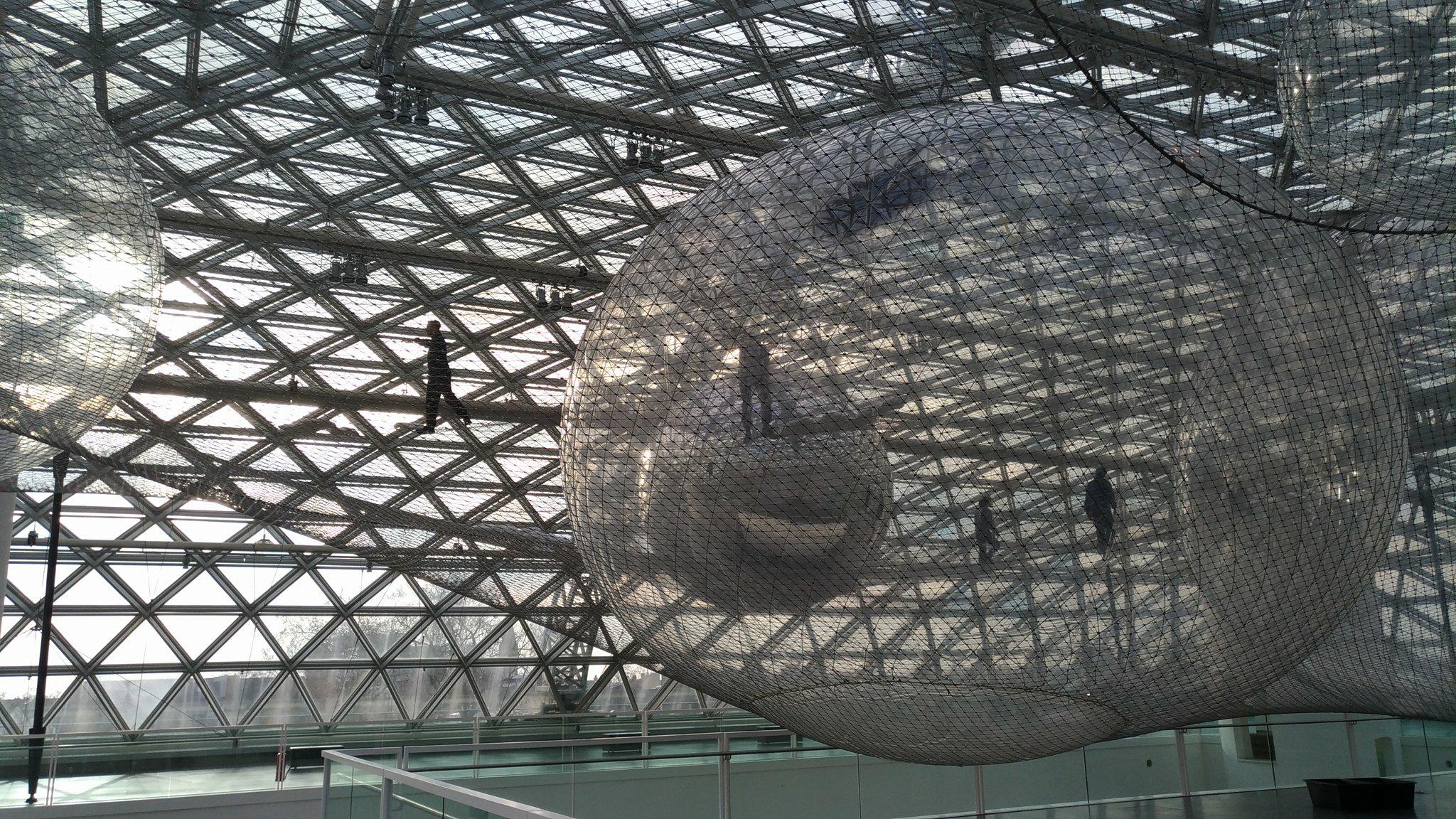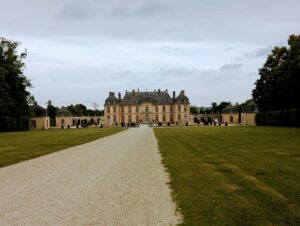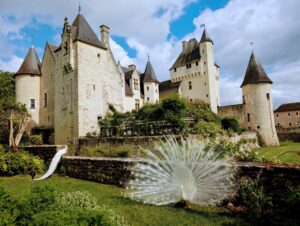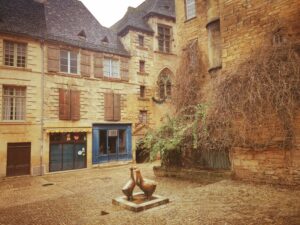On the banks of the Rhine, Düsseldorf, a city dedicated to Arts



The metropolis of 600 000 inhabitants is crossed by the Rhine and the river Düssel (Photo credits of what remains: Alexandre Plateaux), a length of 14km, but 45km in total, which gave its name to the city created in 1288.
Thus, many projects have come out of the ground in order to make all its attraction to the city. 7 monumental bridges supervised by the same architect, took place on the Rhine, as a real cultural and economic artery.
On the banks of the river take place many festivities throughout the year, and separate the main part of Düsseldorf and the other preserved during the War, the Art Nouveau district, the Oberkassel.
Trials are currently underway on one of these bridges to test traffic, with a € 14 million credit from the German government.




The square next to the docks where there are several breweries, is the real meeting point for most festivities punctuate the local life, throughout the year. Their international theme showing the cosmopolitan aspect inspiring the festive vocations organized by the municipality, including the mythical Karnaval, the French Market, the Japanese Spring Festival or the start of the 2017 Tour de France. Christmas lasting 6 weeks and the biggest fair on the Rhine, over 9 days in July, bringing together four million visitors. The same month is dedicated to the tradition of shooting with a parade of 3000 riflemen in uniform and carriages (Photo credits: Alexandre Plateaux).
Currently populated with 600,000 inhabitants, it has the largest Japanese community in Germany with 7,000 nationals of the country of the Rising Sun, most of whom are employed by the 350 locally established Japanese companies, thus generating a rich community life, consisting of cultural centers, temples and other Japanese specialties including karaoke.

On this Burgplatz, left vacant by the site of the old fortress of the prince elector (destroyed in 1872) of which it only sustsist the Tower (Schlossturm), now containing the museum of navigation, close to the old Saint Lambert basilica containing the relics of Saint Appolinaire.


The continuation of the tour of Düsseldorf’s city center, formerly founded in 1288, takes place in the old center (Altstadt) and its emblematic monuments, including the Rathaus (Rathaus) and its period buildings, so representative of the Germanic architectural style and additionally preserved by bombings.


A statue of the famous “Radschläger”, one of the symbols of the city, going back to its origins during the victory of Worringen, where the children made the wheel. An annual school wheel contest continues and a 100-sculpture tour through the city brighten up the streets; reachable via an extensive network of public transport consisting of metro, tram and bus. To deepen the tour, guided tours are organized by the Tourist Office of the city, in several languages.



Examples of the architectural mix governing ancestral constructions and those more contemporary as Art Nouveau, constituting the soul of this city both old and young, being part of the visit, including the very British, Hotel Sir Astor (Photo credits: Alexandre Plateaux).


A little further away is the main street dedicated to the prestigious fashion and luxury brands, the KönigsAllee, also known as “Kö”, one of the longest shopping avenues in Europe.
Bordered by a canal and its sublime fountain Tritons, it contains one of the first German department stores, the Kaufhof including the famous architect Josef Maria Olbrich, and the “Schlanke Mathilde”, a clock that was a historic meeting point. Not far from there, the imaginative Kö-Bogen building (pictured above) is a landmark in the architectural renewal of the old center (Photo credits: Alexandre Plateaux).
https://www.instagram.com/p/BeBGF1nlale/?taken-by=francevisiting
A city that is constantly modernizing

A monumental work of 120 tons, representative of the regional geography, is exposed at the entrance of the new Parliament by the Israeli artist Dany Karavan, installed on the pediment in 1988.
This regional Parliament, built in 1993, replaces the one that was originally based in the current museum of contemporary art, K21.



Not far from there, the offices of the regional administration behind infinite glass windows and energetically ahead of its year of construction in 1998, which earned him an award at the MIPIM Cannes. The site is also accessible to the public up to its 1st floor.
This glass facade offers a remarkable perspective on the RheinTurm, built in 3 years between 1979 and 1982, partly using the sand present in Parliament, and officiating as a relay relay for radio and television. From its 240 meters high, it offers a breathtaking view of the city and in particular its high altitude restaurant 170 meters, allows you to contemplate the panorama (Photo credits: Alexandre Plateaux).




It serves as a gateway to Düsseldorf’s true contemporary MedienHafen district, a business center concentrating new energies in architecture and design.





All based around the old port, today offering a mix of styles and times between old grain halls, the old power station of the port or this building Roggendorf-Haus covered with Flossis , these curious colorful webbed creatures installed in 1998 by the artist Rosalie. Architectural fantasies mingled with the vestiges of the past, surrounded by more contemporary creations including a Pritzker prize and especially the unmissable triptych “dancing” building, called Neuer Zollhof, designed by the Canadian architect Frank Gehry (Photo credits: Alexandre Plateaux).
https://www.instagram.com/p/Bd9r9JllQIs/?taken-by=francevisiting
A concentrate of modern Art


Düsseldorf is dedicated to Art in general and particularly to urban artistic works, scattered here and there, like a treasure hunt through neighborhoods. Notably here the monument of bronze souvenir of the Battle of Worringem, celebrating the 700 years of the city in 1988 and Säulenheiligen the artist Christoph Pöggeler, representing human figures posed on advertising columns since 2001.


Not far from this concept neighborhood is the KIT Contemporary Art Center, buried like an underground concrete gallery and offering highly inspired artistic installations. Located directly under the Promenade along the Rhine, in a space nestled between two major roads, the cultural space was inaugurated in 2007 as a spectacular meeting place and focal point for Contemporary Art, and also located at the same the Ministry of Families and the former State Chancellery on Horion Platz. Visitors can access the literally underground exhibition space through the KIT Café and a grand staircase or elevator: the space itself follows an elliptical arc over 140 meters and is parallel to the Rhine. The height of the ceiling and the width of the space vary. The works themselves are displayed between the bare walls and are produced by young and emerging artists invited to exhibit by KIT Artistic Director Gertrud Peters. Four to six alternating exhibitions are organized each year (Photo credits: Alexandre Plateaux).





Which is also the strong point of the contemporary K21 museum, connected to its counterpart by K20 by a free regular shuttle.


Since 2010, the K21 Museum has served as a meeting place for international artists and a place for contemporary works from a collection of meetings illustrated by the space offered by the 22 rooms on three levels. The gigantic exhibition space offers these installations spread over different distinct rooms and several levels, embellishing the surprising and unexpected logic of the artistic offer, halfway between monastic cells and Temple of Art.




Selected contemporary artists are invited to show projects for a period of one year, initiating a dialogue with the architecture and with works from the permanent collection. The new installations, which will be visible throughout 2017, will focus on the quasi-theatrical staging and architectural extensions of the surrounding space. The K21 (Künstlerräume) is sponsored by the SpardaWest Bank Stiftung since 2016.


Today, at the zenith of the museum, under the roof-top roofing, a curious carousel has been playing for almost a year … The experience proposed to the visitor, suspended more than 25 meters above the patio in orbit or contemplating the sky , lying on a steel wire rope, overhanging the void, fruit of the impressive installation of Studio Tomas Saraceno. Within this network structure, which covers a total area of 2,500 m², are half a dozen swollen “spheres” with diameters up to 8.5 meters.


In addition, since November 18, 2017, the temporary exhibition of the co-founder of the Arab Image Foundation (1997 in Beirut) and the main contributor to his expanding collection, the work of the Lebanese artist Akram Zaatari, is presented -sol, through his photographs (Photo credits: Alexandre Plateaux).
Apart from these two notable sites, there are no less than 17 museums and 100 galleries available to visitors, including the Museum of Cinema and the Museum of Ceramics (Hetjens) in the area of Carlstadt galleries and antique shops. In addition, the Mustard Museum at Bergerstrasse showcases the authentic local mustard, the “Löwensenf” or the unmissable Art Palace (Museum Kunstpalast) and the Glass Museum (Glasmuseum Hentrich).
https://www.instagram.com/p/BeIJhLhlv-B/?taken-by=francevisiting
A local brewery culture rooted in the social bond.

For several centuries, social life has been tied around taverns and notably beer designed in breweries, including the famous Altbier. A brown beer, typical of Düsseldorf, by its design, and a real local institution brewed by several houses. Each of them has its own recipe but all the versions have for common denominator a longer fermentation than the average and a duration of consumption limited to 6 weeks.




It is particularly possible to taste a varied panel of this local beer during a tour on foot, the “Altbier Safari”. Through a route of 5 of the city’s most important breweries, including the most recent Kurzer Brauerei, but also other older Zum Schlüssel, Uerige, Füchschen Brauerei. Most of them are located on the “World’s Largest Counter”, consisting of 260 establishments, starting from the Rathaus, where locals meet at any time of day in the heart of the city, continuing the tradition of taverns. Only 2 of these entities still make their beers in the city center (Photo credits: Alexandre Plateaux).


Among them, the institution Uerige, a huge brewery that officiated since 1862 and offers a long-distance space as well as more historical and confidential for a capacity of 500 people, to malt lovers. All under the leadership of the expert Brasseur, Dr. Christoph Tenge. Its front also decorated with a statue of the famous symbol of the city of “Radschläger”.


The site also offers a typical German restaurant with more regional specialties as well as leading works of art distributed throughout the different rooms are works by Imi Knoebel or a photograph of the famous local artist Andreas Gursky, whose famous Rhein II was awarded 3 million euros at Christie’s in 2011.
In addition, he participated actively in the development of the book published for the anniversary of the establishment. Throughout the pages, in particular each work by covering the walls is commented by a personality of the middle of the Art (Photo credits: Alexandre Plateaux).
A must visit by the Opera


The aptly named Oper Am Rhein is a joint project of the cities of Düsseldorf and Duisburg, bringing together their two Operas entities, continuing a long tradition of collaboration of the two large neighboring cities, nestled on the Rhine. Initially, the Stadttheater Düsseldorf was built from 1873, the first opera house in the city, according to the plans of the architect Ernst Giese. From the 28th of November, 1875, that is, even before the completion of the works, the first representations took place. The venue currently houses one of the most dynamic vocal and choreographic ensembles in Germany.


The Austrian composer Franz Lehar’s three-act operetta, “Der Graf Von Luxemburg”, is being played until February 7, 2018 and resumed in Duisburg from June 13 to July 1, 2018. With a very “Roaring Twenties” staging “For a very eclectic distribution giving way to a very festive and burlesque atmosphere, bypassing some texts to address current issues such as the Trump presidency or the independence of Catalonia (photo credits: OperAmRhein).
Other theaters complement local outlets, such as the Capitol musical theater, Roncalli’s Apollo cabaret, Germany’s first Kom(m)ödchen political theater and the more classic Schauspielhaus.







